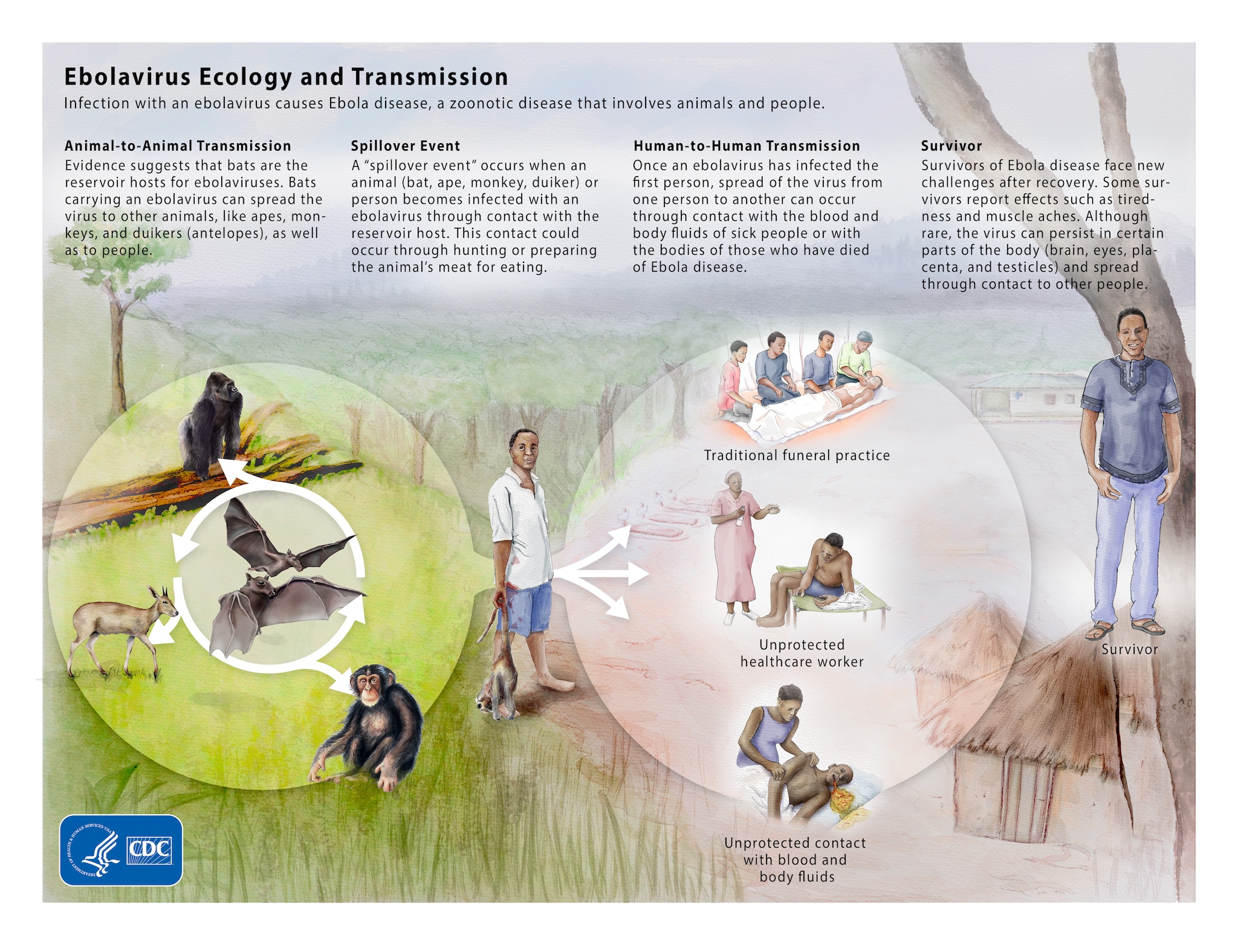Ebola Virus Disease (EVD) is a rare and deadly disease most commonly
affecting people and nonhuman primates (monkeys, gorillas, and
chimpanzees). It is caused by an infection with a group of viruses
within the genus Ebolavirus:
Ebola virus was first discovered in 1976 near the Ebola River in what is now the Democratic Republic of Congo. Since then, the virus has been infecting people from time to time, leading to outbreaks in several African countries. Scientists do not know where Ebola virus comes from. However, based on the nature of similar viruses, they believe the virus is animal-borne, with bats being the most likely source. The bats carrying the virus can transmit it to other animals, like apes, monkeys, duikers and humans.
Ebola virus spreads to people through direct contact with bodily fluids of a person who is sick with or has died from EVD. This can occur when a person touches the infected body fluids (or objects that are contaminated with them), and the virus gets in through broken skin or mucous membranes in the eyes, nose, or mouth. The virus can also spread to people through direct contact with the blood, body fluids and tissues of infected fruit bats or primates. People can get the virus through sexual contact as well.
Ebola survivors may experience difficult side effects after their recovery, such as tiredness, muscle aches, eye and vision problems and stomach pain. Survivors may also experience stigma as they re-enter their communities
- Ebola virus (species Zaire ebolavirus)
- Sudan virus (species Sudan ebolavirus)
- Taï Forest virus (species Taï Forest ebolavirus, formerly Côte d’Ivoire ebolavirus)
- Bundibugyo virus (species Bundibugyo ebolavirus)
- Reston virus (species Reston ebolavirus)
- Bombali virus (species Bombali ebolavirus)
Ebola virus was first discovered in 1976 near the Ebola River in what is now the Democratic Republic of Congo. Since then, the virus has been infecting people from time to time, leading to outbreaks in several African countries. Scientists do not know where Ebola virus comes from. However, based on the nature of similar viruses, they believe the virus is animal-borne, with bats being the most likely source. The bats carrying the virus can transmit it to other animals, like apes, monkeys, duikers and humans.
Ebola virus spreads to people through direct contact with bodily fluids of a person who is sick with or has died from EVD. This can occur when a person touches the infected body fluids (or objects that are contaminated with them), and the virus gets in through broken skin or mucous membranes in the eyes, nose, or mouth. The virus can also spread to people through direct contact with the blood, body fluids and tissues of infected fruit bats or primates. People can get the virus through sexual contact as well.
Ebola survivors may experience difficult side effects after their recovery, such as tiredness, muscle aches, eye and vision problems and stomach pain. Survivors may also experience stigma as they re-enter their communities

Yorumlar